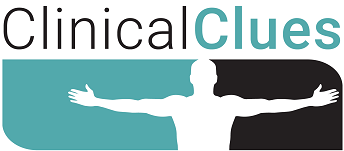High Intensity Interval Training Workouts—YEA or NAY?

August 2022 No. 28
High Intensity Interval Training Workouts—YEA or NAY?
by Jerry Ditz, DPT, Dip. Osteopractic, Cert. SMT, Cert. DN
High Intensity Interval Training (HIIT) workouts alternate periods of intense aerobic exercise at or below maximum oxygen uptake with periods of light recovery exercise or no exercise. Not only does HIIT produce a greater physiological stimulus than exercising at a continuous intensity,(1) but research shows HIIT also produces greater cardiorespiratory fitness, improved vascular function, and enhanced skeletal muscle metabolism.(2) Additionally, HIIT has been used safely with cardiopulmonary and stroke patients.(3)
High Intensity Interval Training has become a popular choice for individuals wanting to improve their fitness. Barbara is an example of what can go wrong with good intentions and how a skilled therapist can support a successful return to proper High Intensity Interval Training.


Barbara’s Response to HIIT
Barbara participated in a morning HIIT workout class for two weeks until she felt a sharp pain in her low back as she was finishing the final sprinting interval. Her pain increased as she proceeded through her workday and her back began to feel exceptionally stiff. The next morning she was barely able to get out of bed.
A therapist’s initial reaction to this story would usually be that the HIIT workout was a poor choice for Barbara. Such an attitude may prevent us from solving the fundamental issue.


Define the Workout Purpose
A series of questions can help guide a patient's workout plan:
Question: “For what reason are you working out?”
Usual responses: I am preparing for an upcoming event, I exercise to manage stress, or I exercise to maintain good health.
What can be done now: Provide examples of ways exercise programs can be specific to a goal.
• For a particular event, discuss the benefits of exercise progression leading into the event, tapering before the event, and recovery after the event.
• For stress management, discuss the benefits of exercising before and after stressful situations.
• For general health, discuss how heart rate, blood pressure, and weight should respond to exercise.
Question: "How often do you change your workout routine?"
Usual responses: I change based on time of year, end of month, or after a completed competition.
What can be done now: Explain that frequency and intensity should change once a month or every three months.
Question: “What are you doing to properly recover from your workouts?”
Usual responses: I stretch after my workouts, do yoga once a week, only work out hard on Monday or Friday, or use an App to monitor my sleep.
What can be done now: Explain how exercise recovery should include some structured flexibility/mobility days, sleep monitoring, and/or pure rest days.
If your patient struggles to answer these questions, it may be helpful to discuss the benefit of a yearly fitness calendar that supports variety. Helping your patient develop a fitness plan may very well allow them to successfully reincorporate proper High Intensity Internal Training workouts.
Define Specifics of High Intensity Interval Training
Most injuries from HIIT are related to poor exercise prescription. Of the elements of exercise prescription (type, intensity, duration, frequency, and progression), frequency and progression are typically the two main culprits in producing injuries.
Focused patient questions can help the patient learn how to safely complete High Intensity Interval Training.
Question: "What type of screening did you undergo before participating in the HIIT class?”
Usual responses: My heart rate and blood pressure were taken (resting and active vitals).
What can be done now: Ask the patient to display proper form /mechanics for each exercise and provide tips/suggestions for important modifications to exercise technique.
Question: “Did your HIIT class offer various intensity levels for beginners?”


Usual responses: No
What can be done now: Advise the patient to request the instructor provide a workout offering progression with three variations of each activity or provide a beginner class to be completed before intensity can progress. If these suggestions are not successful, help the patient determine appropriate intensity levels for each exercise.
Question: “Did the instructor ask you if you had any physical limitations?”
Usual responses: The instructor asked at the beginning of class if anyone had an injury and instructed us to let her know if an exercise causes pain.
What can be done now: Reinforce that the patient must be more forthcoming with the instructor about any preexisting physical limitations or pain response to exercise.
What Happened to Barbara?
Barbara was a typical HIIT participant as she was trying the next new exercise fad but did not have any long-term fitness goals. Additionally, she quickly progressed in two weeks from a low activity level to high intensity interval training five days a week and had no structured rest program. When she experienced pain, she did not inform her instructor.
Therapy initially focused on reducing her resting pain level while educating her on the correct basic Olympic weightlifting form for the squat and deadlift. After her resting pain improved, she began with low duration high intensity interval training with simple movements of cycling and running. Her discharge plan included working with a trusted fitness professional to safely progress her Olympic weightlifting tolerance over the next three months and to progress to a combined workout in the next three to six months.
With new exercise fads, such as HIIT, it is usually not the type of workout that creates injuries. It is commonly a poor understanding by the patient or fitness professional, (or both), of how the exercise routine should be applied to a specific individual.
References
1. Karlsen T, Aamot IL, Haykowsky M, Rognmo Ø. High intensity interval training for maximizing health outcomes. Prog Cardiovasc Dis. 201; 60(1):67-77. doi: 10.1016/j.pcad.2017.03.006. Epub 2017 Apr 3.
2. Taylor JL, Holland D, Spathis JG, et al. Guidelines for the delivery and monitoring of high intensity interval training in clinical populations. Prog Cardiovasc Dis. 2019; 62(2):140-146. https://doi.org/10.1016/j.pcad.2019.01.004
3. Michael A, Wewege MA, Ahn D, Yu J, Liou K, Keech A. High‐intensity interval training for patients with cardiovascular disease—is it safe? A systematic review. J Am Heart Assoc. 2018; 7(21): e009305. doi: 10.1161/JAHA.118.009305.
Download Clinical Clue No. 28, High Intensity Interval Training Workouts—YEA or NAY?, August 2022
© BraceLab; 2022 all rights reserved
Disclaimer: BraceLab Clinical Pearls are intended to be an informal sharing of practical clinical ideas; not formal evidence-based conclusions of fact.
